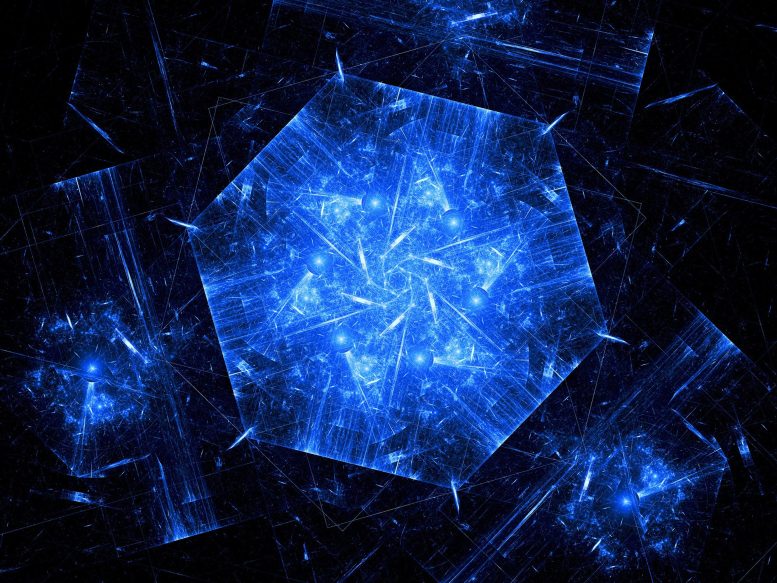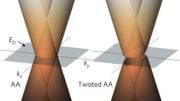
In a recent publication in Nature, researchers have discovered record-high magnetoresistance in graphene under ambient conditions. The team utilized high-quality graphene in its intrinsic state, creating a plasma of fast-moving Dirac fermions that demonstrated a surprisingly high mobility despite frequent scattering. This discovery of giant magnetoresistance could help solve longstanding mysteries surrounding strange metals and linear magnetoresistance. The potential applications of this finding span various industries, as materials with strong magnetoresistance responses are highly sought after for their use in magnetic sensors found in cars and computers.
Researchers at The University of Manchester have discovered record-high magnetoresistance in graphene, offering potential breakthroughs in understanding strange metals and applications in magnetic sensors.
In a paper published in the journal Nature on April 13, 2023, researchers from The University of Manchester report record-high magnetoresistance that appears in graphene under ambient conditions.
Materials that strongly change their resistivity under magnetic fields are highly sought for various applications and, for example, every car and every computer contain many tiny magnetic sensors. Such materials are rare, and most metals and semiconductors change their electrical resistivity only by a tiny fraction of a percent at room temperature and in practically viable magnetic fields (typically, by less than a millionth of 1 %). To observe a strong magnetoresistance response, researchers usually cool materials to liquid-helium temperatures so that electrons inside scatter less and can follow cyclotron trajectories.
Now a research team led by Professor Sir Andre Geim has found that good old graphene that seemed to be studied in every detail over the last two decade exhibits a remarkably strong response, reaching above 100% in magnetic fields of standard permanent magnets (of about 1,000 Gauss). This is a record magnetoresistivity among all the known materials.
Speaking about this latest graphene discovery, Sir Andre Geim said: “People working on graphene like myself always felt that this gold mine of physics should have been exhausted long ago. The material continuously proves us wrong finding yet another incarnation. Today I have to admit again that graphene is dead, long live graphene.”
To achieve this, the researchers used high-quality graphene and tuned it to its intrinsic, virgin state where there were only charge carriers excited by temperature. This created a plasma of fast-moving “Dirac fermions” that exhibited a surprisingly high mobility despite frequent scattering. Both high mobility and neutrality of this Dirac plasma are crucial components for the reported giant magnetoresistance.
“People working on graphene like myself always felt that this gold mine of physics should have been exhausted long ago. The material continuously proves us wrong finding yet another incarnation. Today I have to admit again that graphene is dead, long live graphene.”
— Professor Sir Andre Geim
“Over the last 10 years, electronic quality of graphene devices has improved dramatically, and everyone seems to focus on finding new phenomena at low, liquid-helium temperatures, ignoring what happens under ambient conditions. This is perhaps not so surprising because the cooler your sample the more interesting its behavior usually becomes. We decided to turn the heat up and unexpectedly a whole wealth of unexpected phenomena turned up,” says Dr. Alexey Berdyugin, the corresponding author of the paper.
In addition to the record magnetoresistivity, the researchers have also found that, at elevated temperatures, neutral graphene becomes a so-called “strange metal.” This is the name given to materials where electron scattering becomes ultimately fast, being determined only by the Heisenberg uncertainty principle. The behavior of strange metals is poorly understood and remains a mystery currently under investigation worldwide.
The Manchester work adds some more mystery to the field by showing that graphene exhibits a giant linear magnetoresistance in fields above a few Tesla, which is weakly temperature dependent. This high-field magnetoresistance is again record-breaking.
The phenomenon of linear magnetoresistance has remained an enigma for more than a century since it was first observed. The current Manchester work provides important clues about origins of the strange metal behavior and of the linear magnetoresistance. Perhaps, the mysteries can now be finally solved thanks to graphene as it represents a clean, well-characterized, and relatively simple electronic system.
“Undoped high-quality graphene at room temperature offers an opportunity to explore an entirely new regime that in principle could be discovered even a decade ago but somehow was overlooked by everyone. We plan to study this strange-metal regime and, surely, more of interesting results, phenomena and applications will follow,” adds Dr. Leonid Ponomarenko, from Lancaster University and one of the leading Nature paper authors.
Reference: “Giant magnetoresistance of Dirac plasma in high-mobility graphene” by Na Xin, James Lourembam, Piranavan Kumaravadivel, A. E. Kazantsev, Zefei Wu, Ciaran Mullan, Julien Barrier, Alexandra A. Geim, I. V. Grigorieva, A. Mishchenko, A. Principi, V. I. Fal’ko, L. A. Ponomarenko, A. K. Geim and Alexey I. Berdyugin, 12 April 2023, Nature.
DOI: 10.1038/s41586-023-05807-0









All very well, but does anyone use graphene? We were promised long lasting battery’s made with graphene, what ever happened to that? Just another invention leading to nothing!